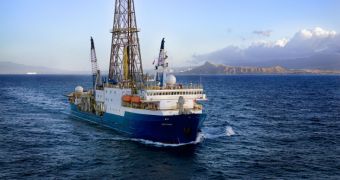At one point in Earth's distant history, the difference in temperatures between areas at the Equator and Antarctica were just half of what they are today. When this period, called the late Eocene, ended, the Antarctic Circumpolar Current (ACC) caused a shift in climate, a new study finds.
About 38 million years ago, Antarctica was covered in forests, and had a fairly temperature climate. It was inhabited by furry marsupials, and generally represented a reserve for biodiversity while the rest of the wold was battered by various harmful events.
But, about 5 million years later, things changed, and the continent began being covered by miles-thick ice crusts. The reason why the planet's climate changed so much in such a short time have always puzzled experts.
The new investigation proposes that the tropical, greenhouse climate of the Eocene was shifted to the current, cooler one by the Antarctic Circumpolar Current (ACC). Details of the proposal appear in this week's issue of the top journal Science.
This research was led by expert Miriam Katz, who is a research scientist at the Rensselaer Polytechnic Institute (RPI). She and her team are providing some of the most impressive evidence to date to support the claim that the ACC had a major role to play in this shift.
“What we have found is that the evolution of the Antarctic Circumpolar Current influenced global ocean circulation much earlier than previous studies have shown,” the team leader explains.
“This finding is particularly significant because it places the impact of initial shallow ACC circulation in the same interval when the climate began its long-term shift to cooler temperatures,” she adds.
“These climate changes are one of the most significant shifts in Earth's history, from early Cenozoic 'greenhouse' climates to the mid- to late Cenozoic 'icehouse' that saw repeated massive glaciations of the polar regions,” explains Candace Major.
She holds an appointment as a program director in the US National Science Foundation's (NSF) Division of Ocean Sciences. The DOS partially funded the new RPI investigation, with the rest of the money provided by the Integrated Ocean Drilling Program (IODP).
“The work by Katz and colleagues is the first to demonstrate that the basic structure of currents associated with modern ocean circulation has existed for the past 33 million years,” Major comments.
According to climatologists, the ACC is a west-to-east-flowing oceanic current that circle Antarctica. This water mass dominates circulation patterns throughout the Southern Ocean, and it keeps the continent cool by preventing warm water from reaching its shores.

 14 DAY TRIAL //
14 DAY TRIAL //